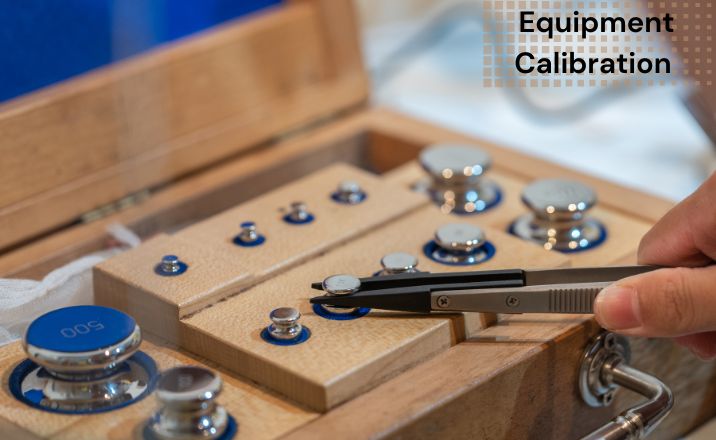Precision Matters: The Critical Role of Equipment Calibration in Laboratory Success

In the world of testing, precision isn’t just a goal—it’s a necessity. Yet, one crucial aspect of maintaining accuracy is often overlooked: equipment calibration. While it may seem tedious, regular calibration is the unsung hero of reliable results. Let’s dive into why calibration matters and how it can make or break your lab’s success.
Why do we need calibration?
Think about it – You’ve made lot of effort to develop a method of testing, only to discover that the equipment to perform the testing was off by a fraction. As the saying goes “Garbage in, garbage out.”
Uncalibrated equipment can lead to:
- False results
- Wasted resources
- Flawed conclusions
For the meticulous analyst, calibration isn’t just a chore—it’s an essential part of the scientific process.
Tangible Benefits of Equipment Calibrations:
- Accuracy & Precision: Calibrated equipment delivers more accurate and precise measurements, which are essential for reliable experimental results and data analysis. For example, in pharmaceutical industry, even a slight inaccuracy in measuring active ingredients could lead to ineffective or potentially harmful medications.
- Regulatory Compliance: Many industries are subject to strict regulations that require regular calibration of equipment to maintain quality standards and ensure safety.
- Quality Assurance: Proper calibration is a fundamental aspect of quality control in laboratories, helping to maintain the integrity of research and analytical processes. It’s a key component of Good Laboratory Practice (GLP).
- Cost Efficiency: Regular calibration can help identify and correct issues before they lead to equipment failure, potentially saving time and money on repairs or replacements. It also reduces the likelihood of wasted materials due to inaccurate measurements
- Reproducibility: Calibrated equipment allows for consistent results across different laboratories and time periods, which is crucial for scientific reproducibility.
- Traceability: Calibration provides traceability to national and international measurement standards, ensuring that measurements are consistent across the globe.
The Cost of Neglect:
Using uncalibrated equipment can lead to several problems:
- Inaccurate or unreliable results, potentially leading to false conclusions
- Wasted resources due to repeated experiments or rejected batches in production
- Potential safety hazards, especially in industries like healthcare
- Non-compliance with industry standards and regulations, risking fines or loss of accreditation
- Damage to reputation and credibility
Best Practices for calibration
- Develop a calibration schedule based on equipment type, usage frequency, and manufacturer recommendations.
- Use traceable standards for calibration, ensuring your measurements are linked to national or international standards.
- Maintain detailed calibration records, including dates, results, and any adjustments made.
- Train staff on proper calibration techniques and the importance of the process.
- Regularly review and update calibration procedures to stay current with best practices and technological advancements.
- Implement a system for tracking calibration due dates and automatically notifying responsible personnel.
- Consider environmental factors that may affect calibration, such as temperature, humidity, and vibration.
Importance of Choosing the Right Calibration Service Provider
Here’s why choosing the right calibration partner matters:
- Expertise: Reputable calibration service providers employ trained technicians with deep knowledge of various instruments and calibration techniques.
- Accreditation: Look for providers accredited to ISO/IEC 17025, which ensures they meet rigorous quality standards for calibration services.
- Range of Services: A good provider should be able to calibrate a wide range of instruments, reducing the need for multiple service contracts.
- Traceability: Ensure the provider offers calibration certificates with traceability to national or international standards.
- Turnaround Time/TAT: Consider providers who can meet your scheduling needs without compromising on quality.
- Post-Calibration Support: Choose a provider that offers robust support for addressing any issues post-calibration.
Determining Calibration Frequency:
Consider these factors when setting your calibration schedule:
- Equipment type and sensitivity
- Frequency of use
- Environmental conditions
- Manufacturer recommendations
- Regulatory requirements
As Louis Pasteur once said, “Chance favors the prepared mind.” In the laboratory, chance favors the well-calibrated equipment. By prioritizing calibration, you’re not just maintaining tools—you’re upholding the very foundations of integrity.
Are you confident in the accuracy of your equipment? If not, it’s time to re calibrate your approach to precision.
